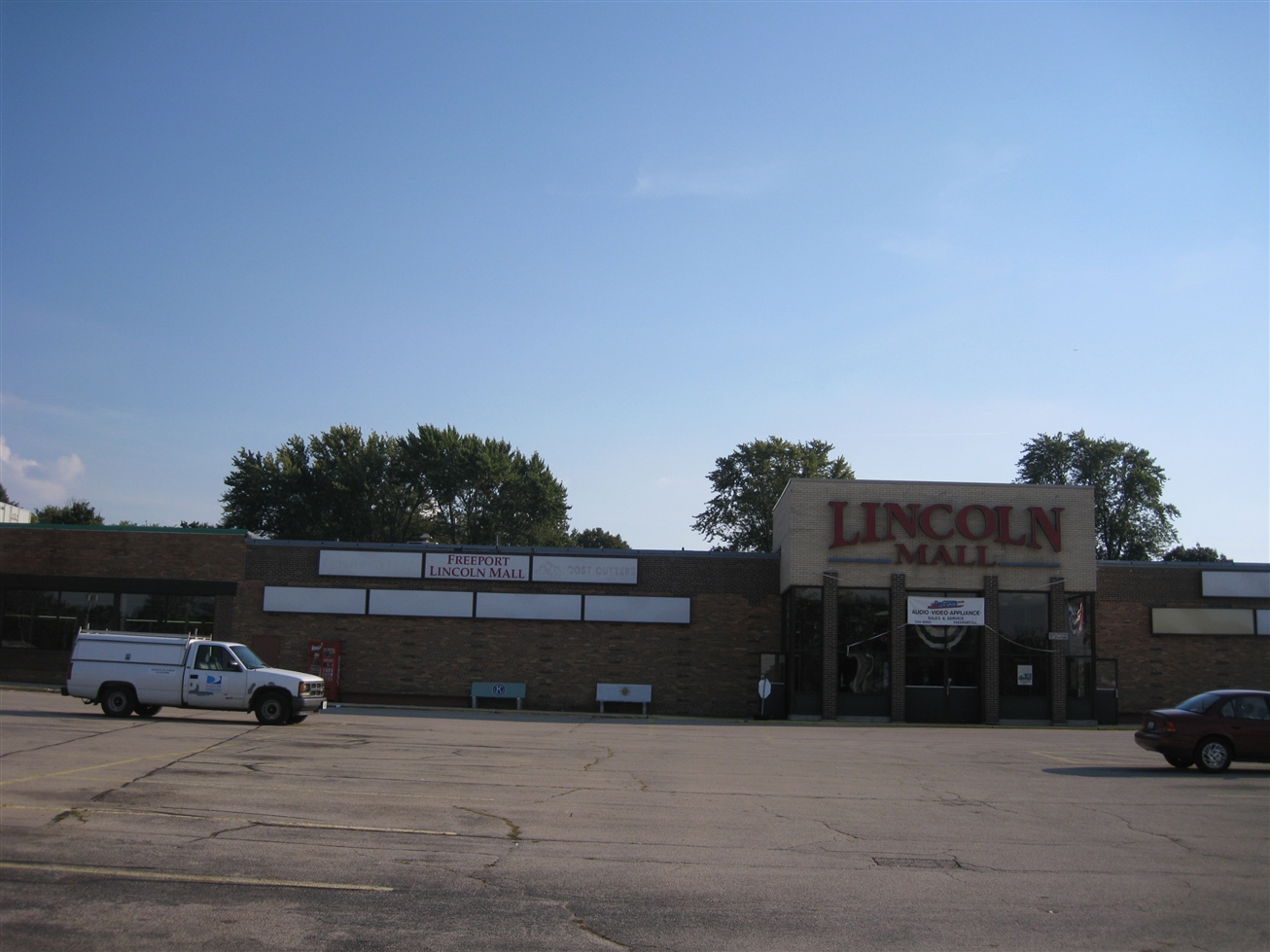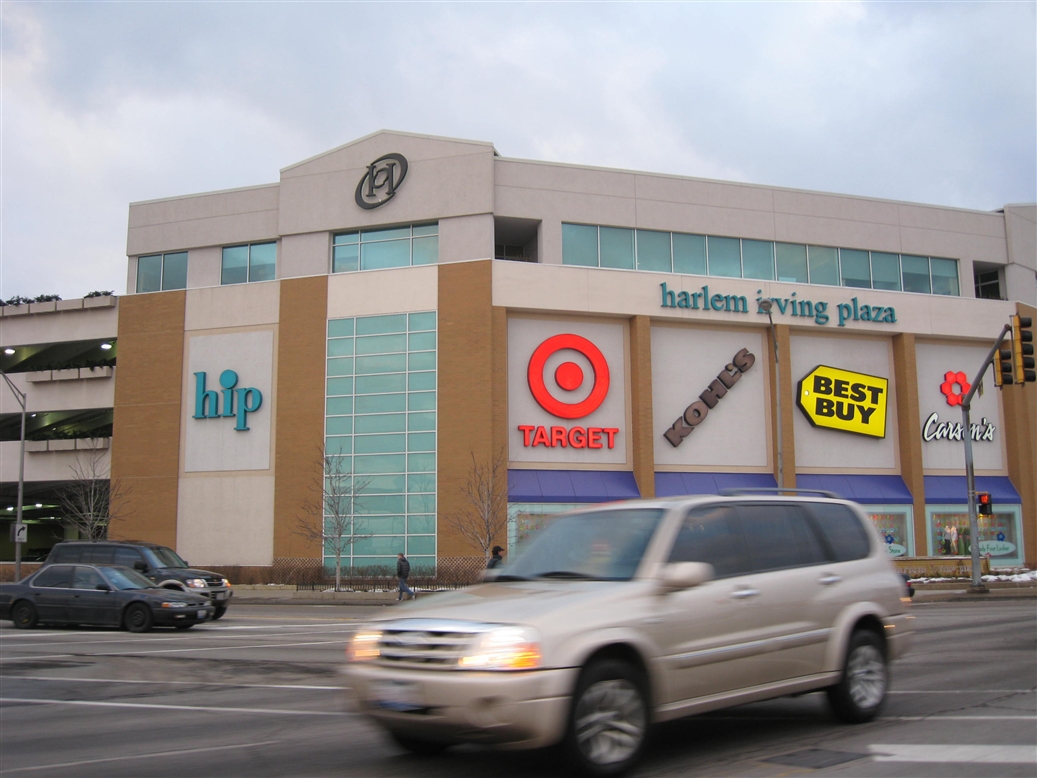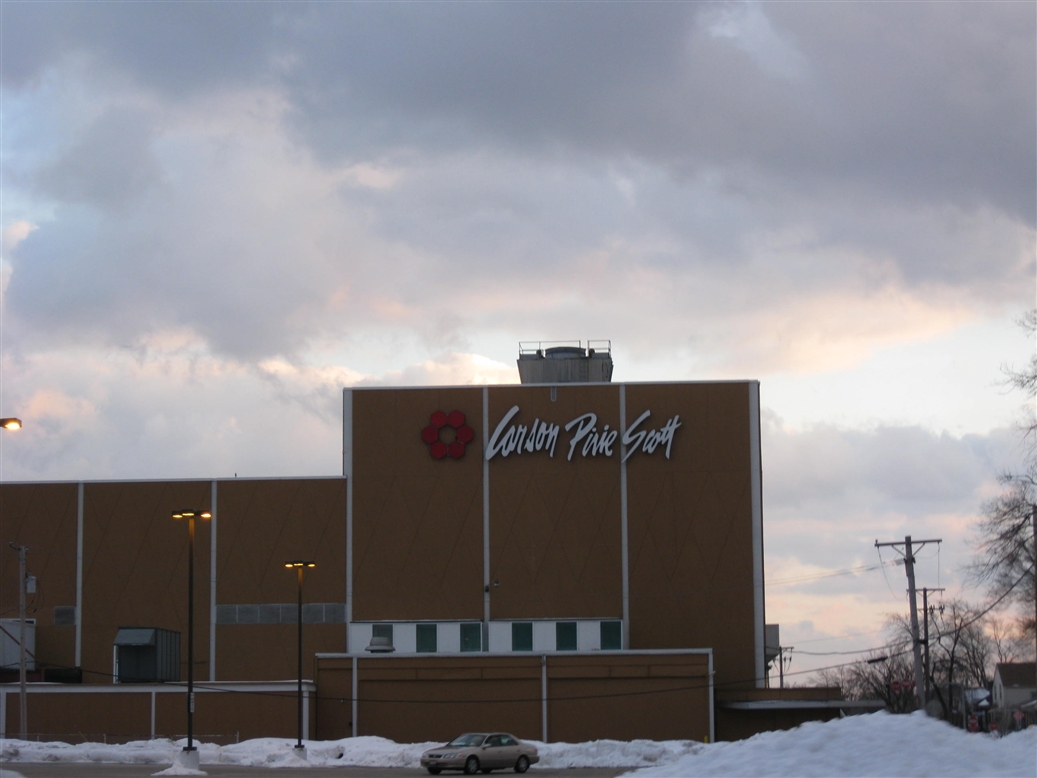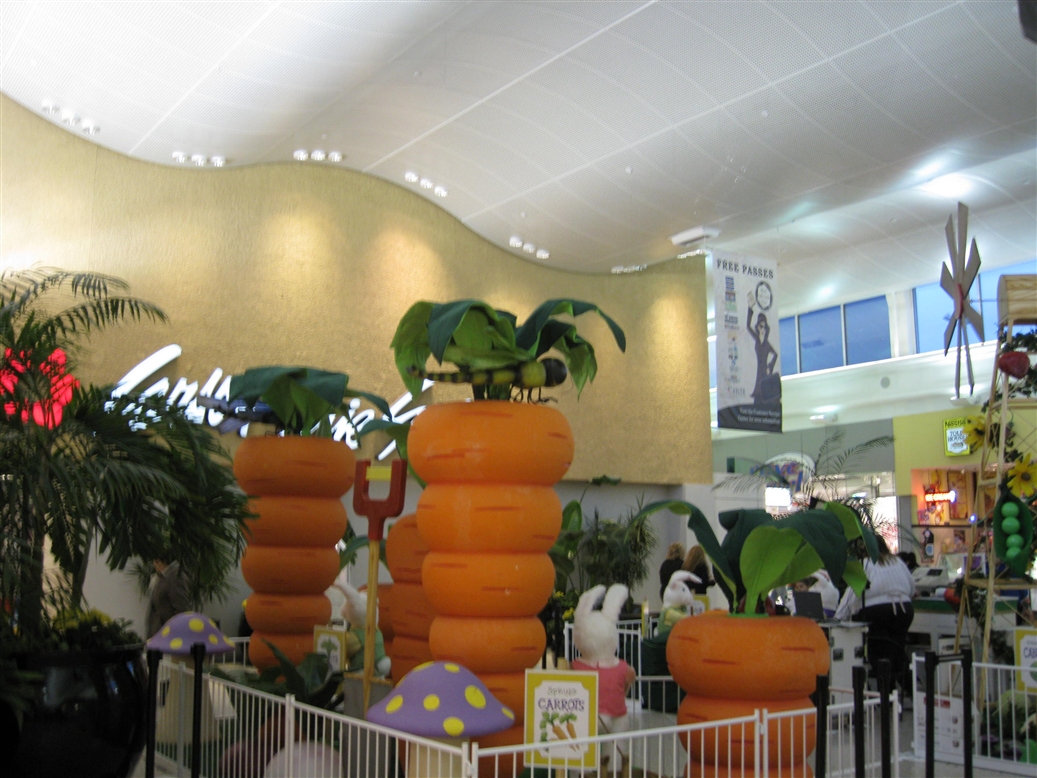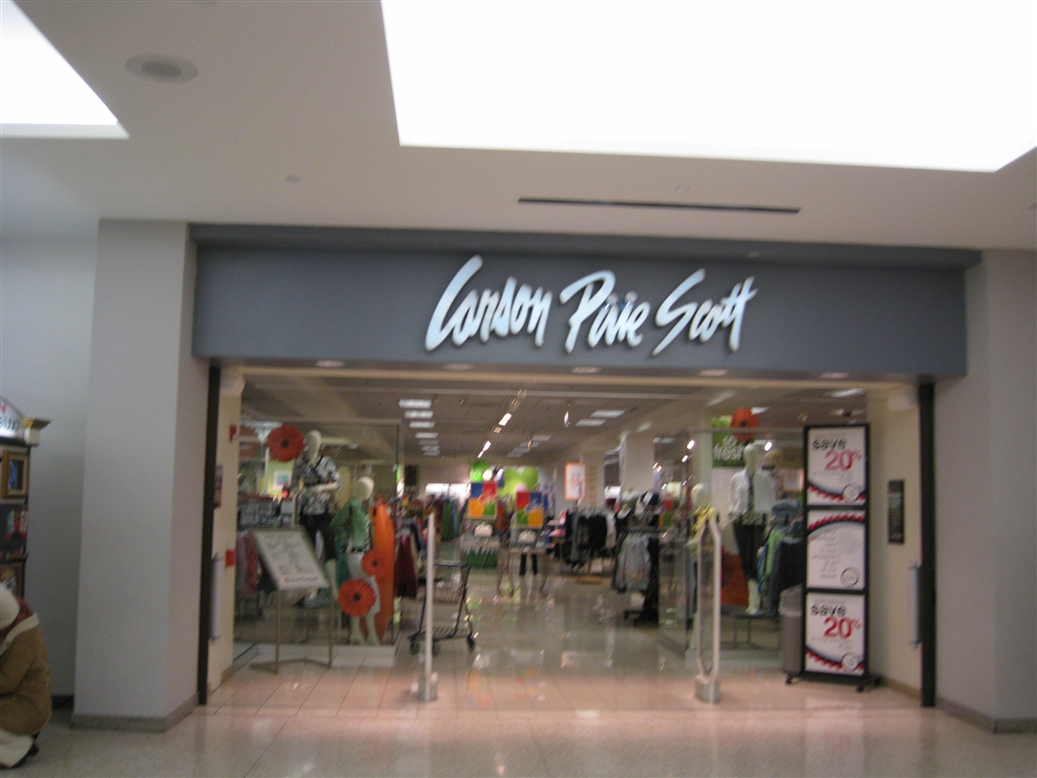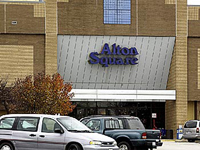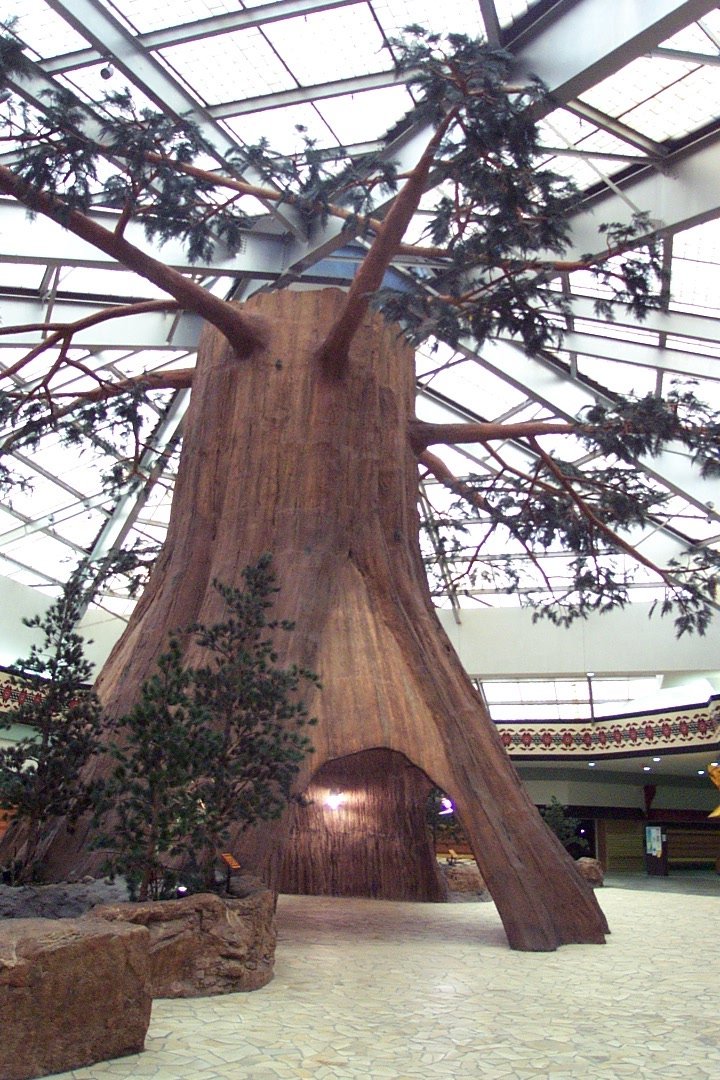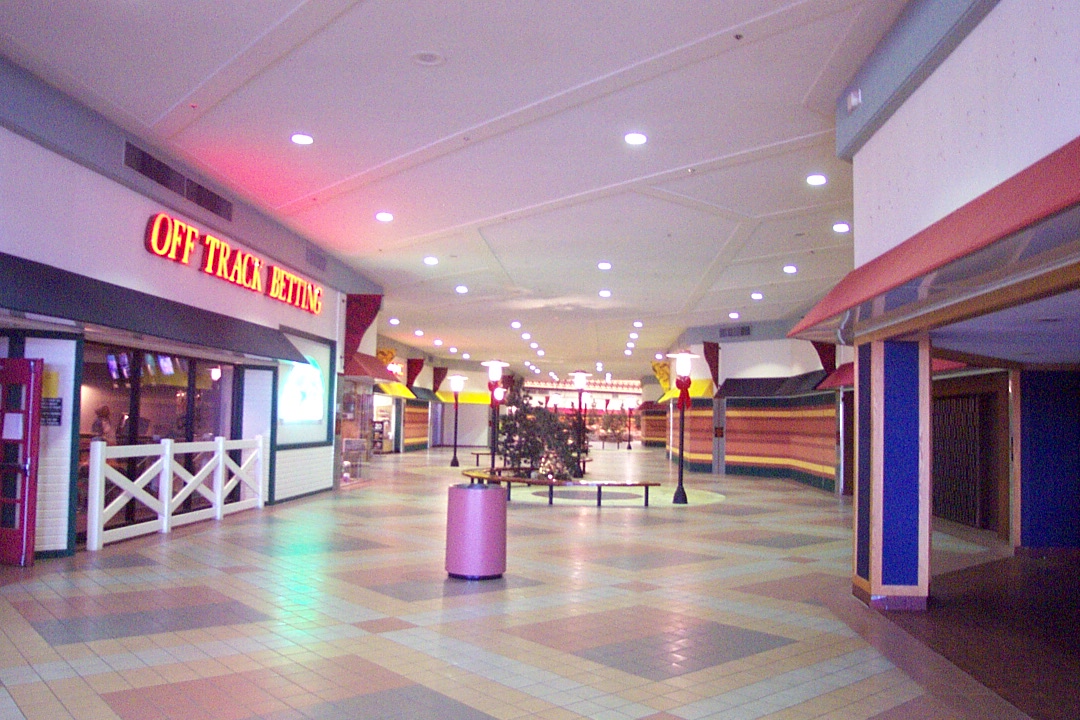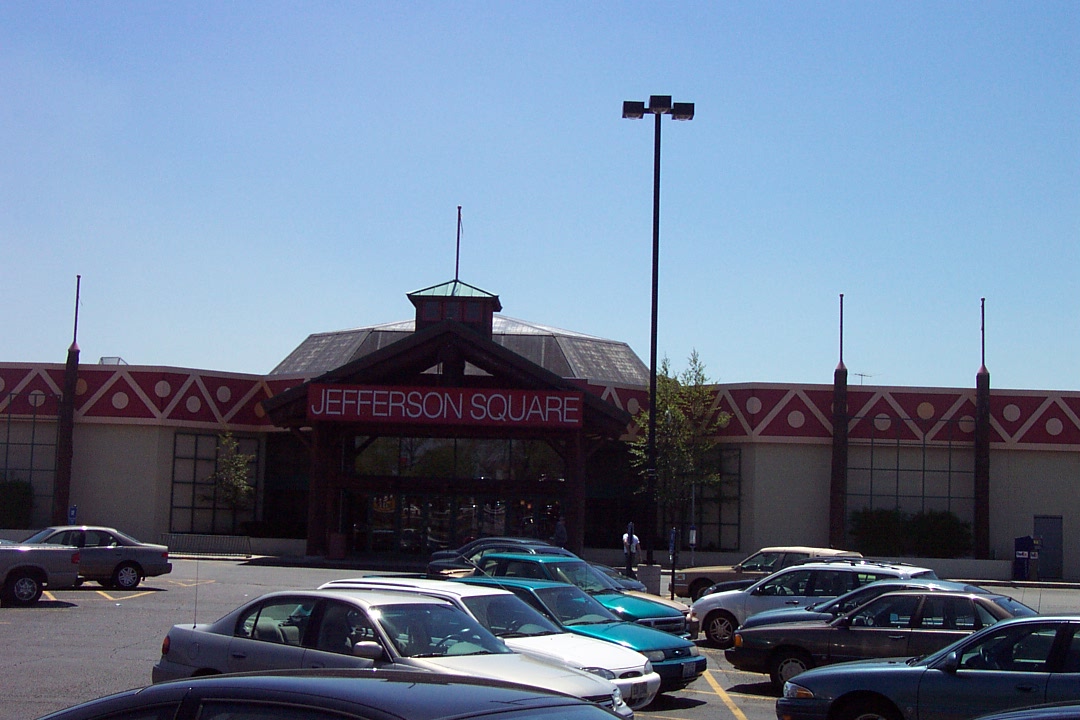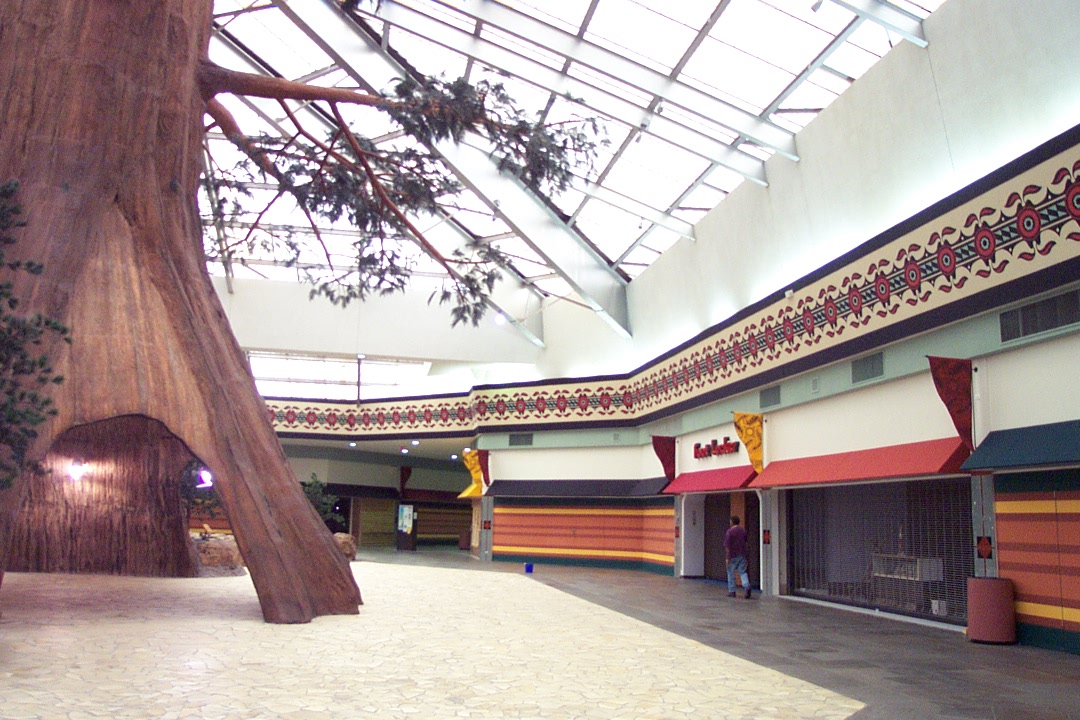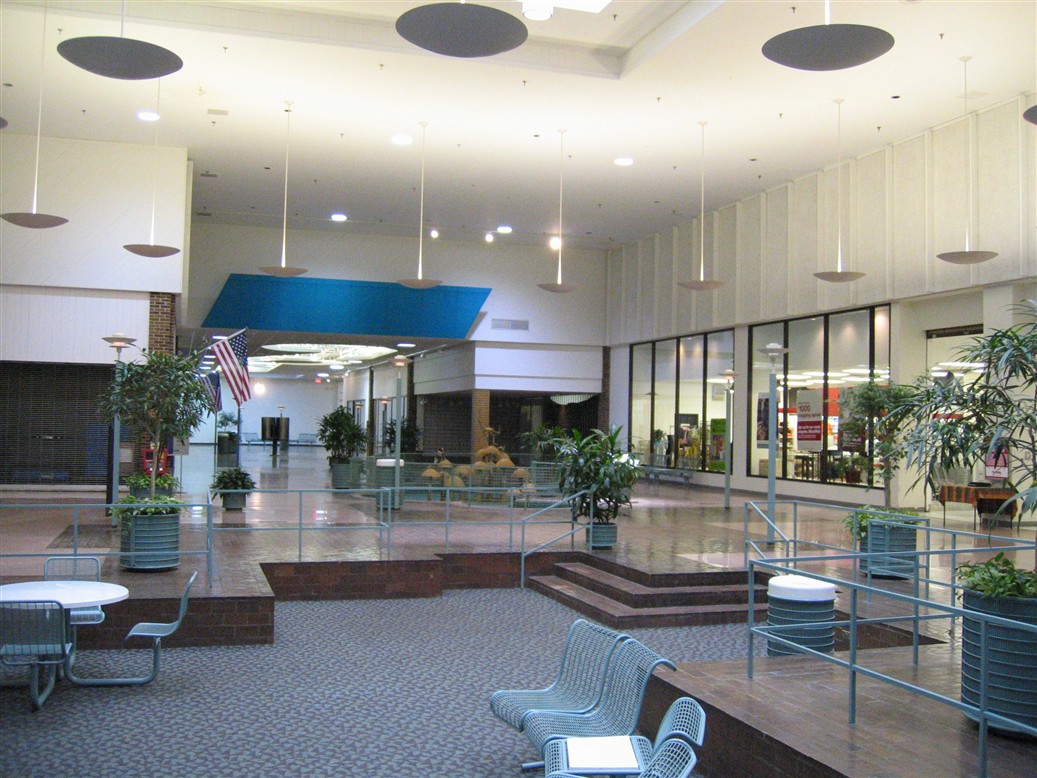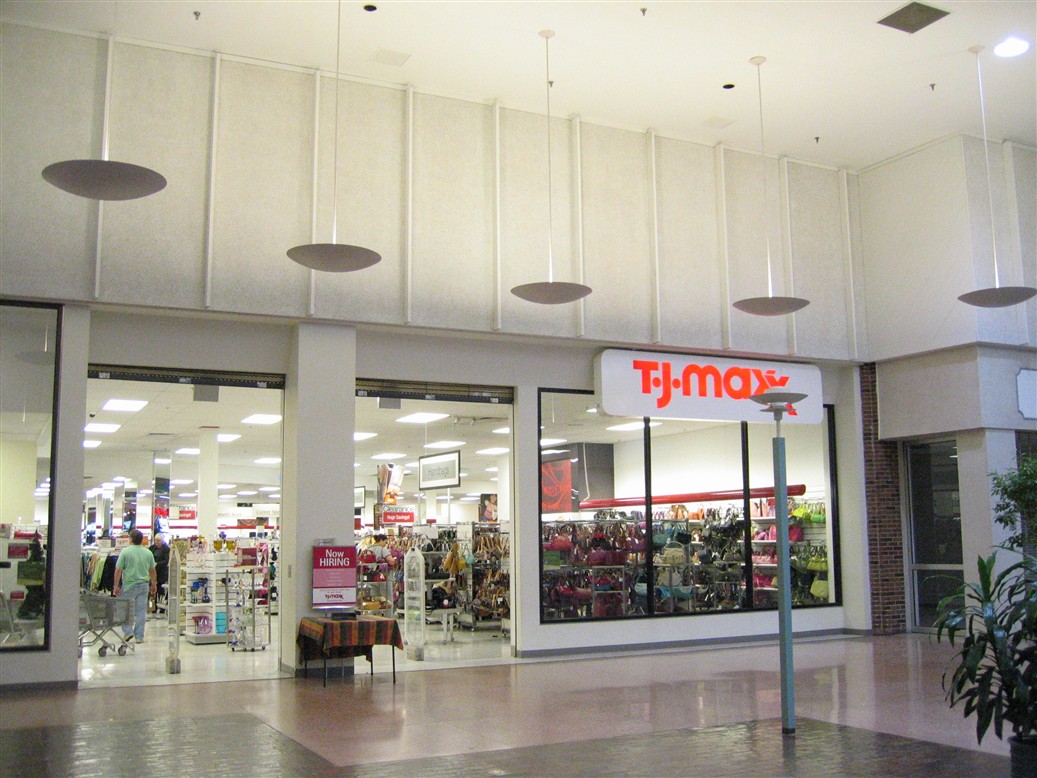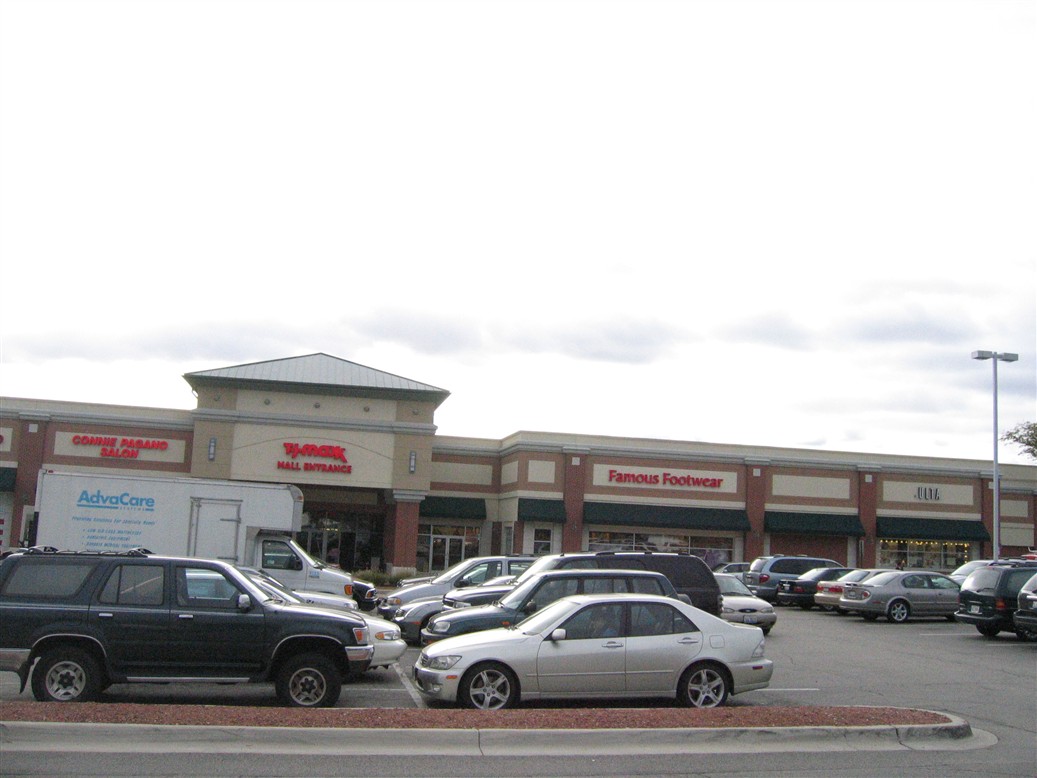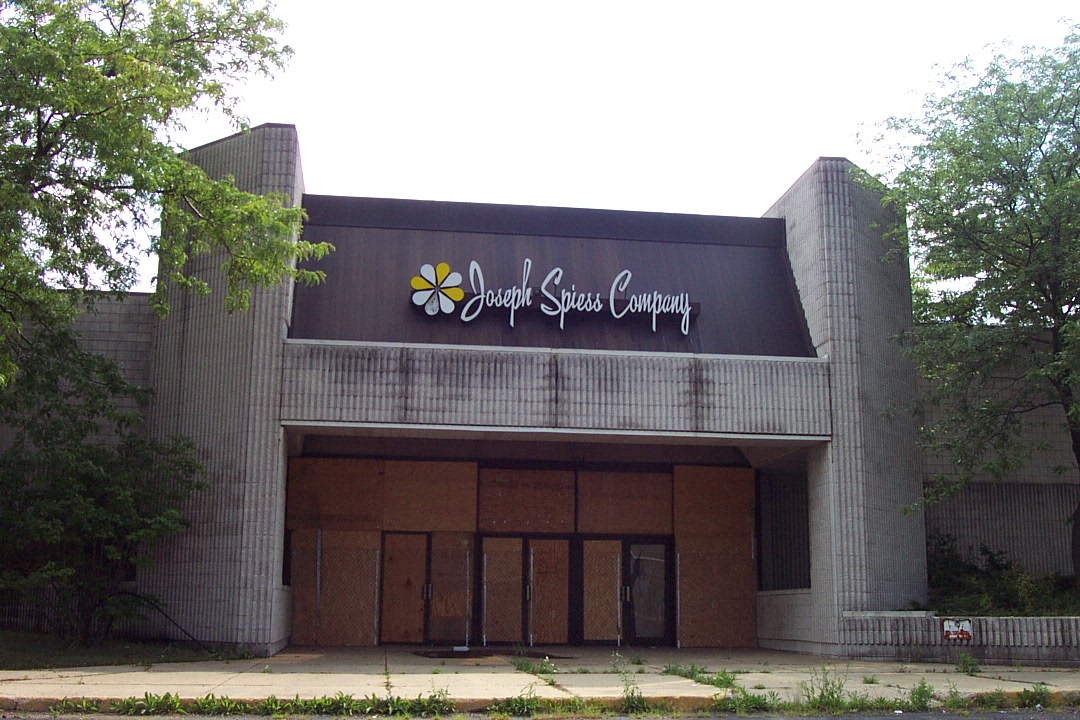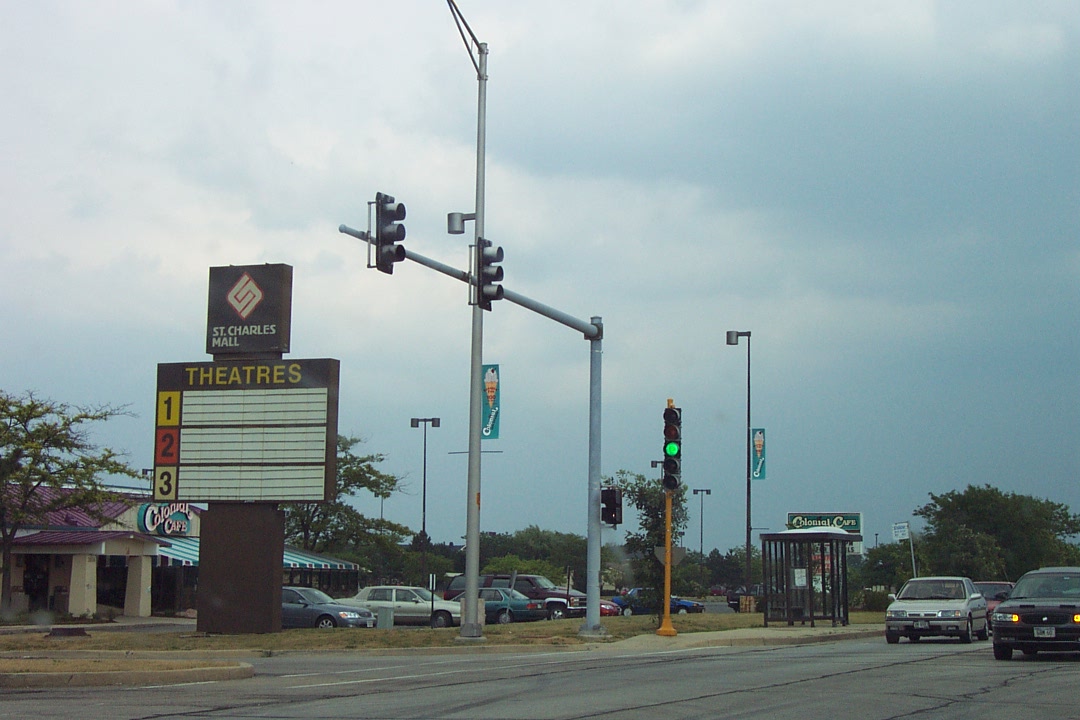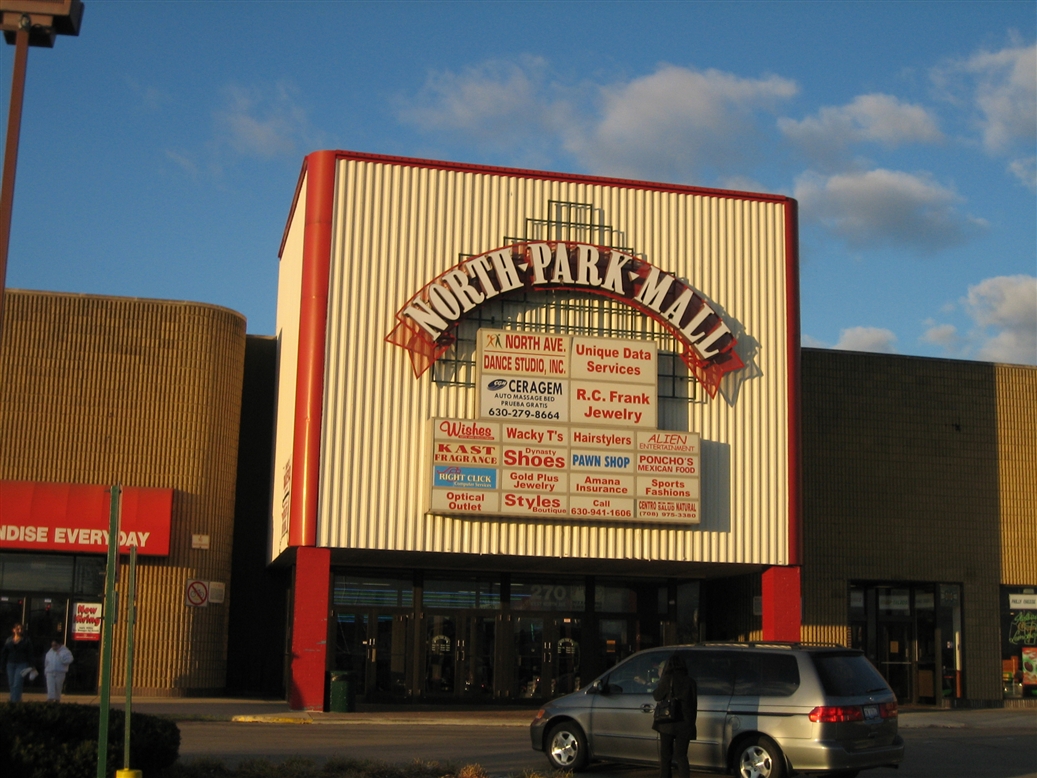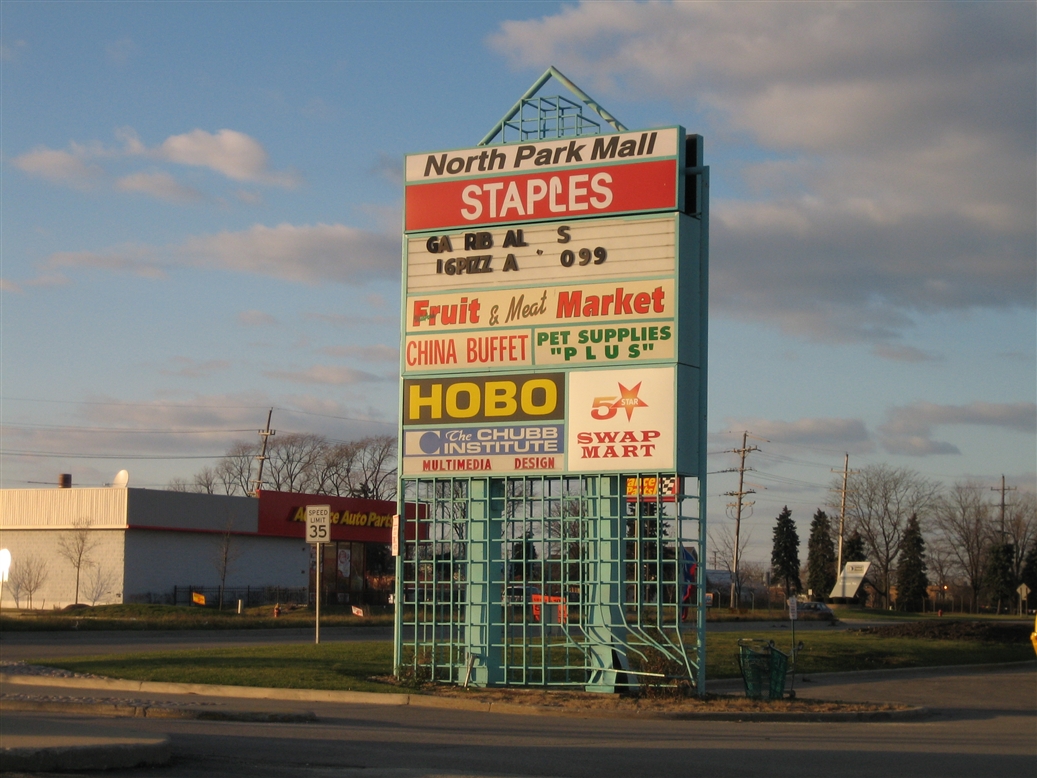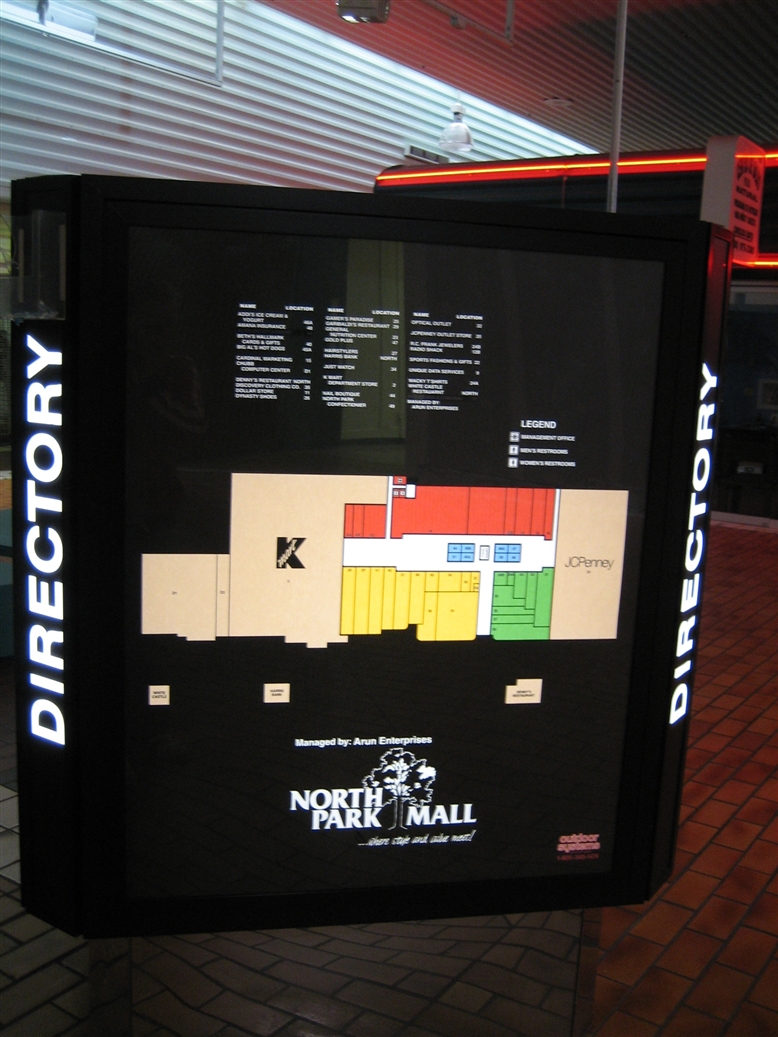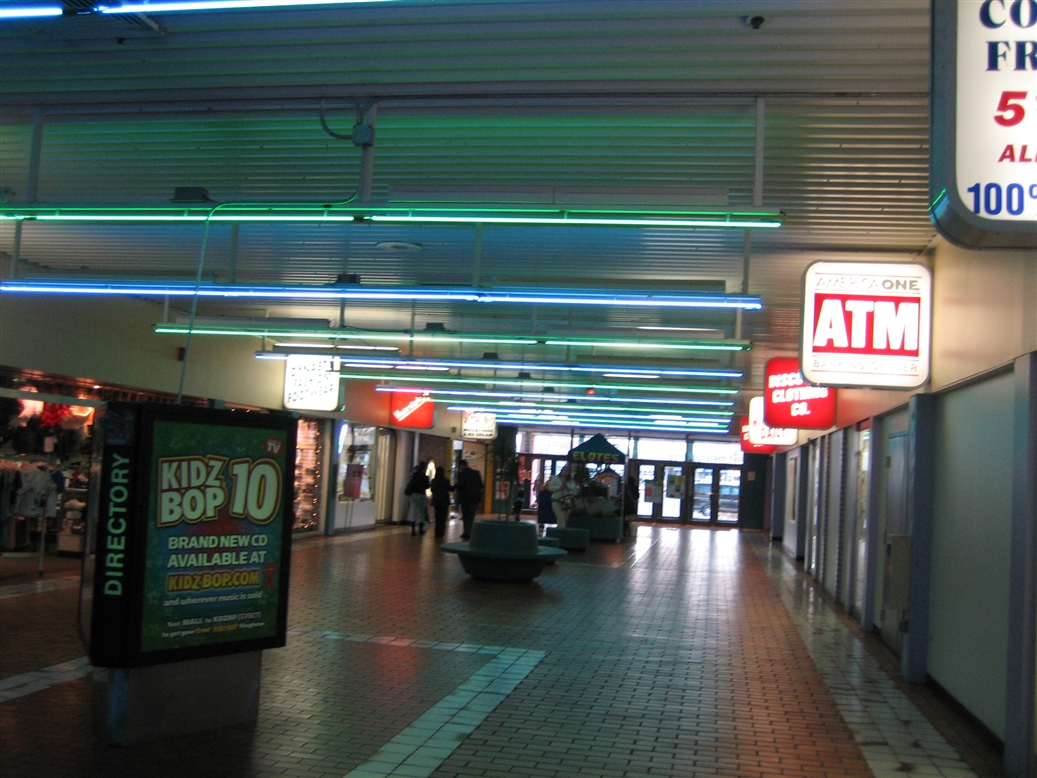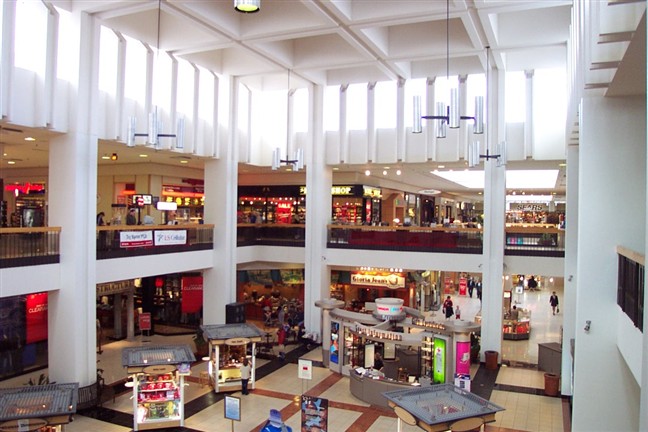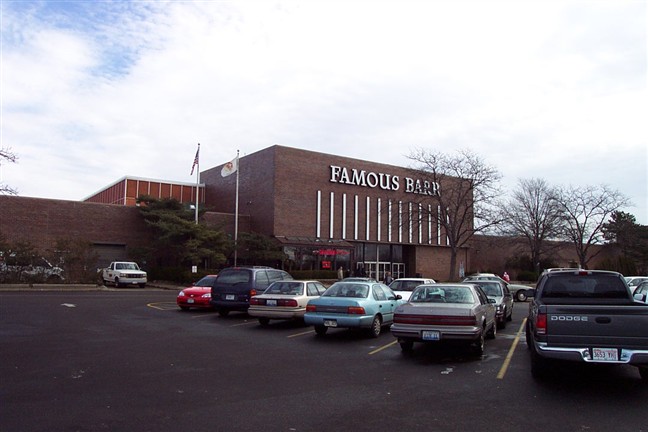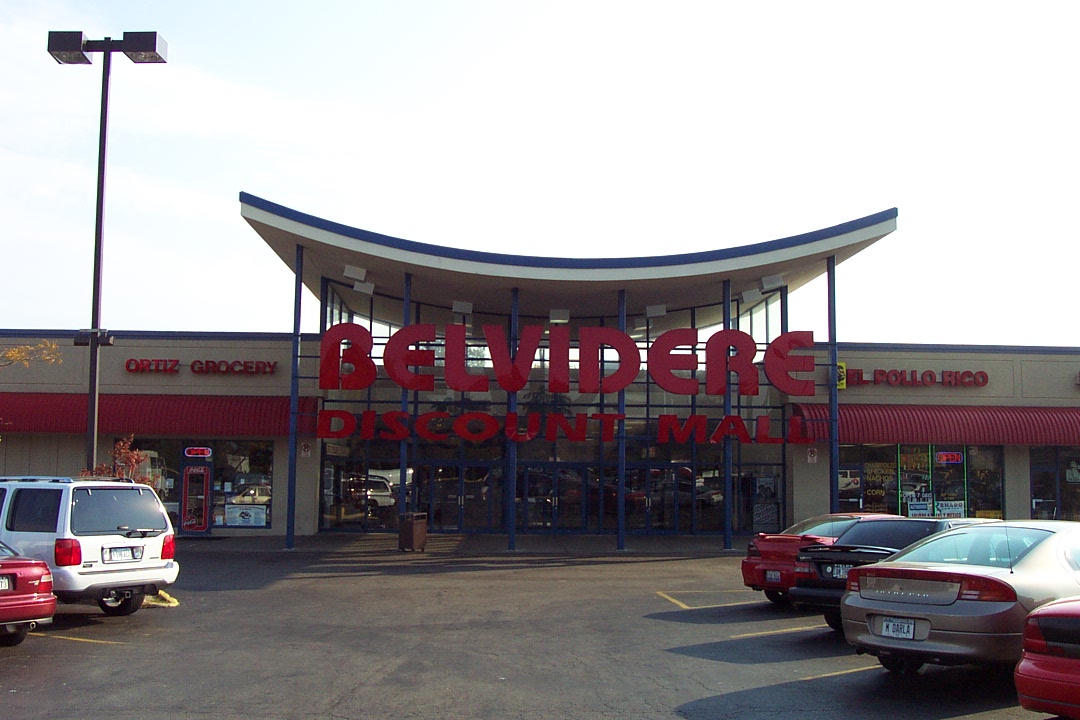
Most of our retail “fall from glory” tales are variations on the same theme. Larger, more modern competition swoops in and leaves behind a swath of older retail in the dust. Literally. This particular story is no exception; however, it’s a lot more complicated (and interesting) than that, at least from a retail history standpoint. Apparently if you kick a retail center down once, it dies, but if you kick it down twice, it reinvents itself completely to be somewhat immune.
Waukegan, Illinois is one of several older satellite gateway cities orbiting the periphery of greater Chicago. Located 40 miles north of downtown Chicago, the city has grown to house nearly 100,00 residents today. Much like Gary, Hammond, Joliet, Aurora, Elgin, and arguably others like it, these cities grew up not necessarily as post-war suburbs of Chicago, but in tandem with Chicago from the early 19th century onward. Unlike the suburban post-war boomtown suburbs of Schaumburg, Gurnee, Orland Park, and countless others which all barely existed before the mid-20th century suburban explosion, these gateway cities have a history more common with that of Chicago’s in the manufacturing era a century previous.
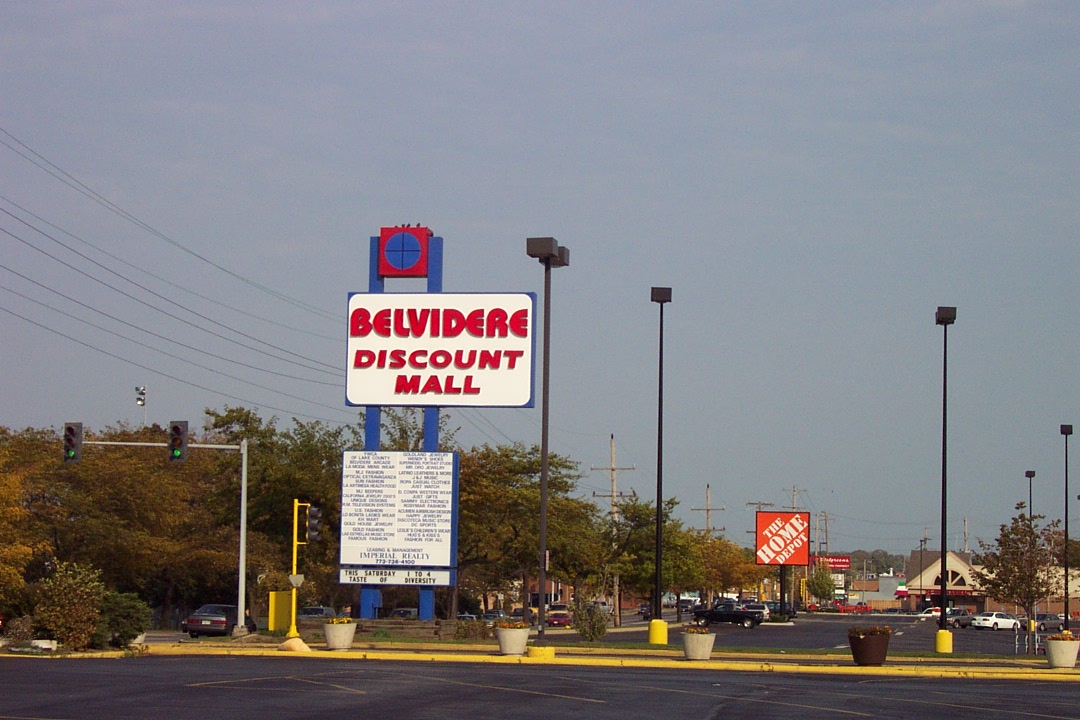 Understanding this is important because it helps us pinpoint how suburban sprawl has impacted these older gateway cities. Modern sprawl has filled in the rural pockets in between these cities and Chicago with relatively affluent bedroom communities, complete with cookie-cutter housing development and strip retail everywhere. In response, these older anchor cities became fallow during the latter part of the 20th century. While cities adjacent to Waukegan in northern Lake County such as Gurnee have benefitted from the massively explosive post-war sprawl to have large-scale amusement parks, huge malls and more, cities like Waukegan, Elgin, Joliet, and Aurora have quietly rusted away behind the scenes as if embattled in a forgotten identity crisis.
Understanding this is important because it helps us pinpoint how suburban sprawl has impacted these older gateway cities. Modern sprawl has filled in the rural pockets in between these cities and Chicago with relatively affluent bedroom communities, complete with cookie-cutter housing development and strip retail everywhere. In response, these older anchor cities became fallow during the latter part of the 20th century. While cities adjacent to Waukegan in northern Lake County such as Gurnee have benefitted from the massively explosive post-war sprawl to have large-scale amusement parks, huge malls and more, cities like Waukegan, Elgin, Joliet, and Aurora have quietly rusted away behind the scenes as if embattled in a forgotten identity crisis.
Left out of the picture, these anchor cities began creating suburban developments of their own. In Joliet, Elgin and Aurora, suburban sprawl accounts for much of the city’s land area today, and because these cities benefit from having room to grow and farmland to gobble this process will continue unabated until it reaches some sort of natural break, or demand wanes. Cities like Gary, Hammond, and Waukegan, however, weren’t so fortunate. Each of these cities has had almost no room to build out to keep up with the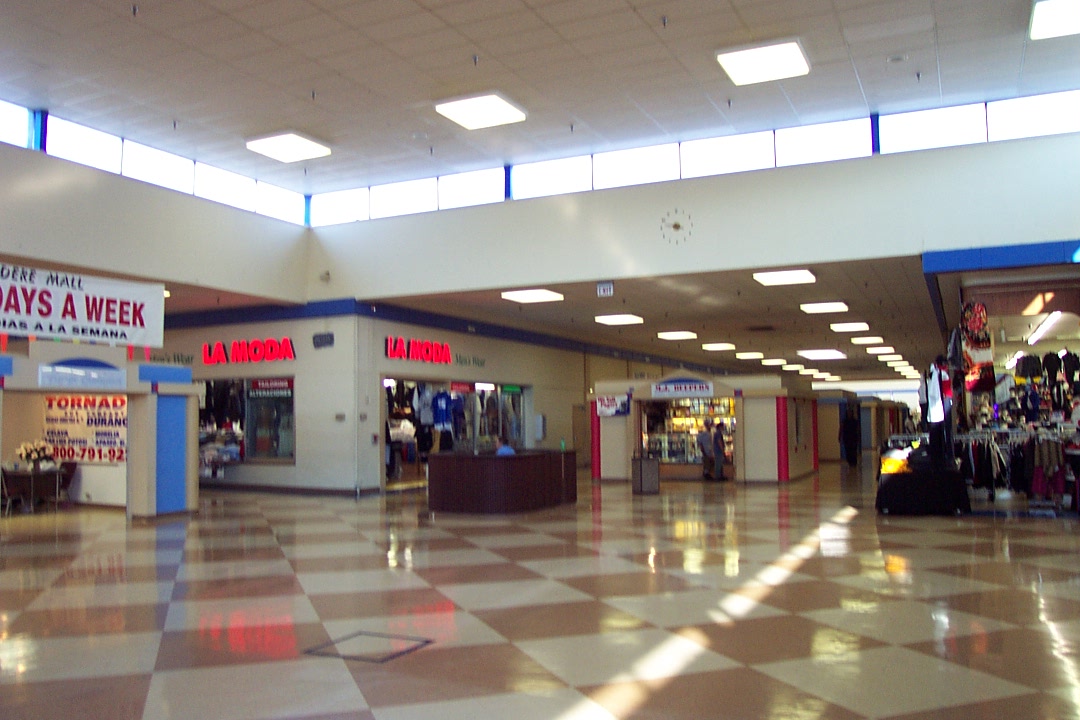 trend of suburbanization, due to being directly up against Lake Michigan on one side and against other established cities of suburban sprawl on the other. By the time they were willing to get in the game, it was almost too late. Also consider these cities are older on the whole, and their residents’ egress caused the suburban sprawlburgs to happen in the first place, and you have a vicious cycle of simultaneously more sprawl in the new suburbs and more blight in the older cities’ cores. In Waukegan’s case, it is a pall on the wealthy suburbia that makes up the rest of Lake County.
trend of suburbanization, due to being directly up against Lake Michigan on one side and against other established cities of suburban sprawl on the other. By the time they were willing to get in the game, it was almost too late. Also consider these cities are older on the whole, and their residents’ egress caused the suburban sprawlburgs to happen in the first place, and you have a vicious cycle of simultaneously more sprawl in the new suburbs and more blight in the older cities’ cores. In Waukegan’s case, it is a pall on the wealthy suburbia that makes up the rest of Lake County.
Waukegan did, however, make some attempts to join the sprawl-party in the mid-20th century. It gobbled up as much farmland as it could on the southwest side of the city, the only side not already occupied by something else. There it expanded quite far, creating the same young cul-de-sac subdivisions as everywhere else, and even two enclosed malls. The first of these opened in the 1960s (conflicting sources list different years) along Belvidere Road (Hwy 120), a fast growing strip of retail and services at the time. Rather appropriately, it was named Belvidere Mall.
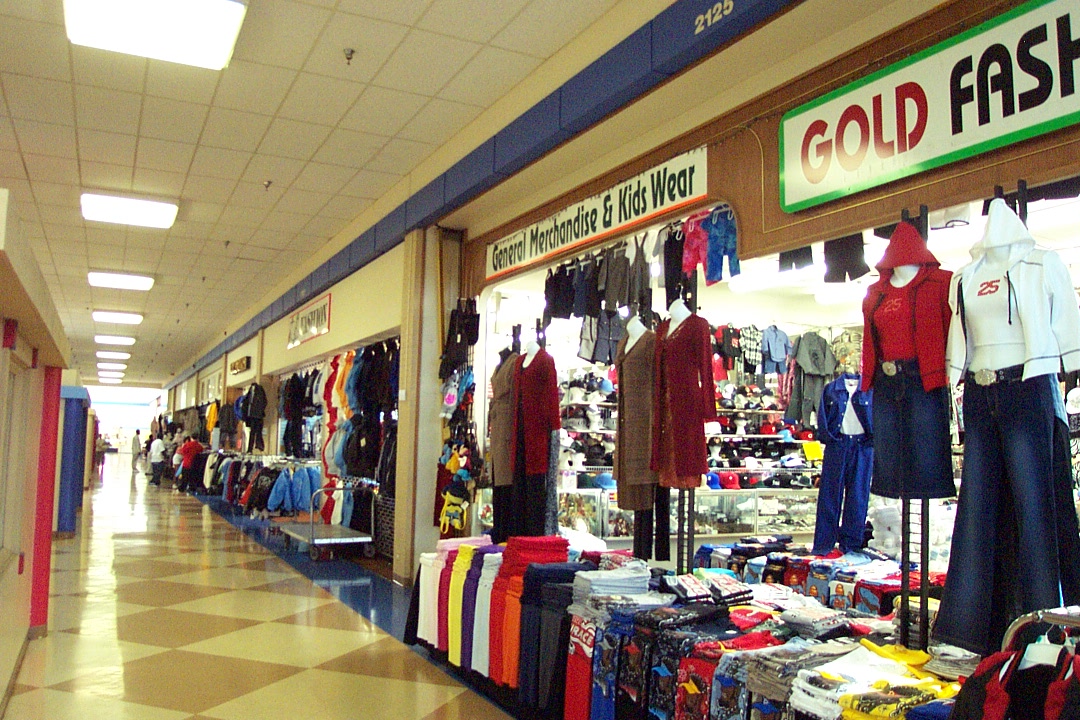
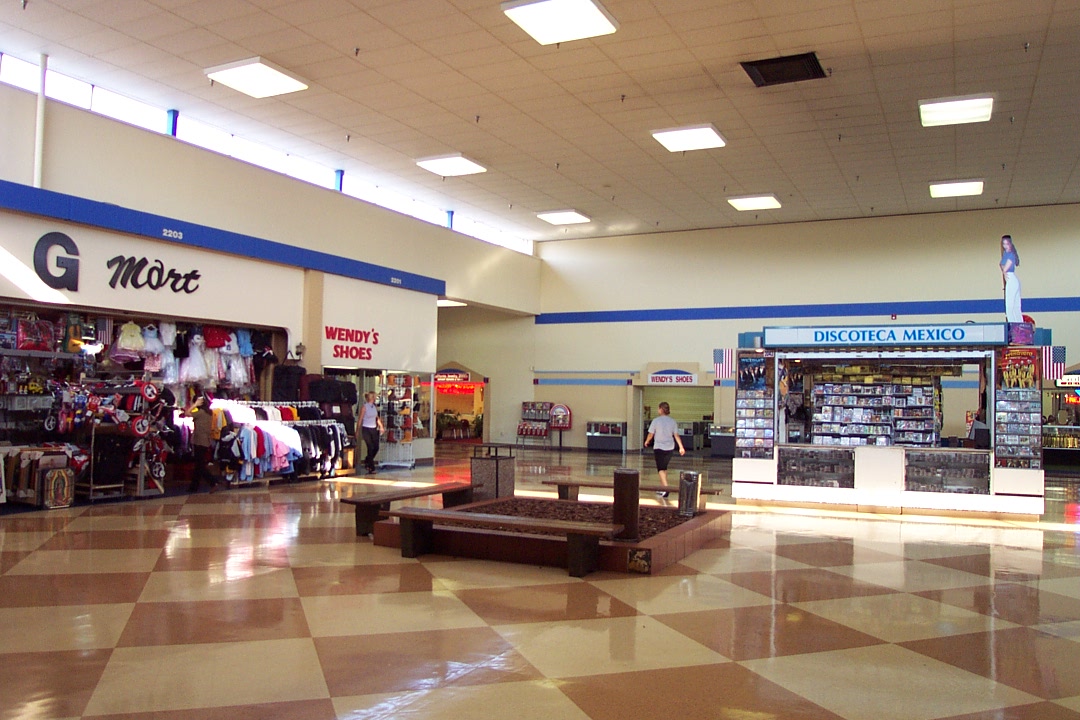
When Belvidere Mall opened it was anchored by a large Montgomery Ward and, for a time, was the only large enclosed mall along the Lake Michigan shoreline between Milwaukee and Chicago. However, Belvidere Mall enjoyed only a modicum of popularity due to competition in the form of a much larger super-regional mall which opened just up the street in 1971. Lakehurst Mall opened immediately successful and at over one million square feet with three behemoth anchors, outsized most other shopping venues in northern Chicagoland and the surrounding areas of Wisconsin. Furthermore, it was better situated than smaller Belvidere Mall, two miles away. Lakehurst was located adjacent to the junction of the Tri-State Tollway (I-294), US 41, Waukegan Road (IL 43) and Belvidere Road (Hwy 120). It was also situated in one of the only “modern” areas of Waukegan, far from the urban, decaying, and industrial downtown core. In addition to all that, Lakehurst was designed to be as modern as possible itself (for the 1970s) by famed retail architect Victor Gruen.
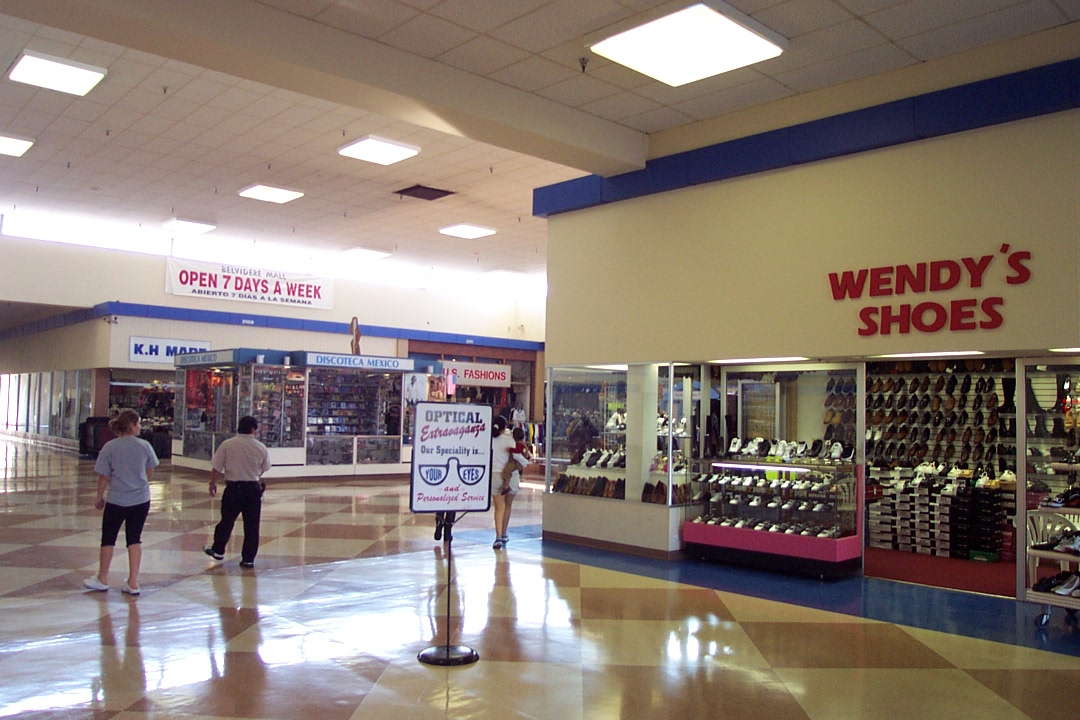 As the 1970s progressed, Lakehurst Mall achieved further dominance under the city of Waukegan and Lake County’s master plans, which called for ancillary retail and residential areas to be built along the Lakehurst ring road adjacent to the mall. These included strip convenience centers, many apartment complexes, chain restaurants, and family fun centers. Although placing these activities together is common now, it was a relatively new idea in the early 1970s and the Lakehurst model was something of a pioneer for this type of development.
As the 1970s progressed, Lakehurst Mall achieved further dominance under the city of Waukegan and Lake County’s master plans, which called for ancillary retail and residential areas to be built along the Lakehurst ring road adjacent to the mall. These included strip convenience centers, many apartment complexes, chain restaurants, and family fun centers. Although placing these activities together is common now, it was a relatively new idea in the early 1970s and the Lakehurst model was something of a pioneer for this type of development.
In contrast, all through the 1970s and into the 1980s, sales at Belvidere Mall slumped as it could not keep up with its more popular sibling down the road. In 1988, the bottom fell out at Belvidere Mall and it lost its most important anchor, Montgomery Ward, to Lakehurst Mall in order to fill the Wieboldt’s vacancy after the chain went under. From that point on, and arguably from a point long before that, Belvidere Mall ceased to be of much importance as a regional destination.
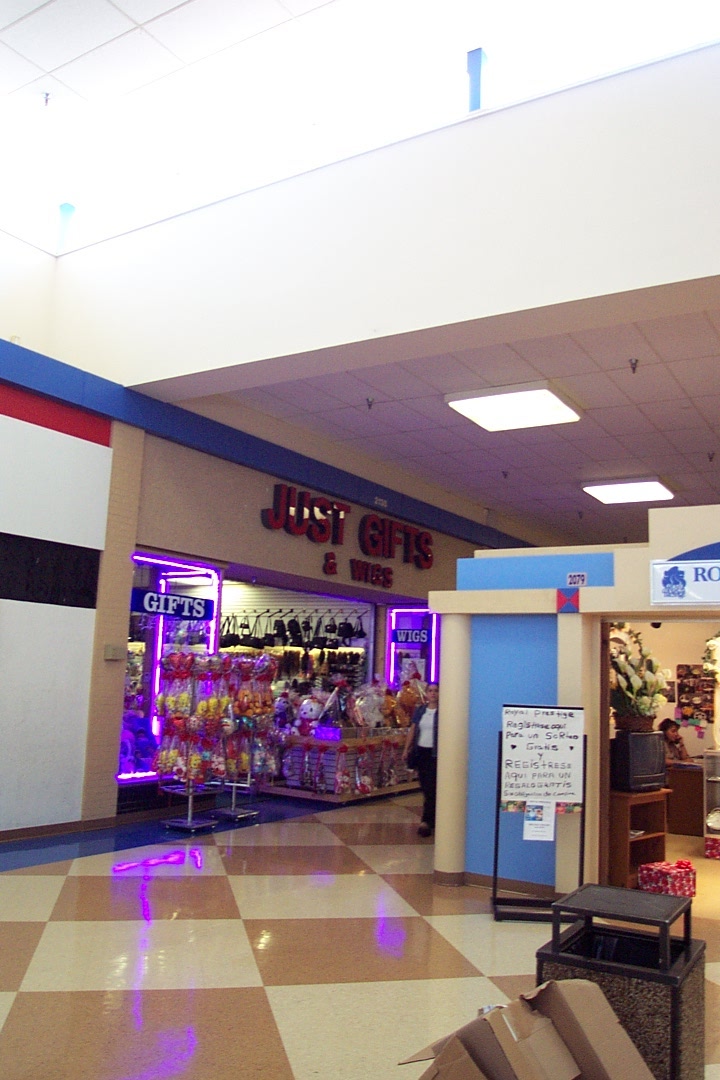 Complicating matters further, the retail dynamic in and around Waukegan changed more dramatically in 1991 when the Mills Corporation opened a newer, even larger mall than Lakehurst in the adjacent sprawlburg of Gurnee across from an already well-established Six Flags amusement park. The 1.8 million square foot Gurnee Mills was a huge success, and drew shoppers from all over southeastern Wisconsin, northeastern Illinois and beyond because it was a new hybridized format of enclosed mall with trendy, popular outlet stores. Gurnee Mills didn’t didn’t feel like an outlet mall, however, so sales skyrocketed and the Mills corporation went on to build many more malls like it across North America. Immediately following Gurnee Mills’ opening, a slew of retail boxes and strip centers sprang up around it, mostly along Grand Avenue (IL 120), just a few miles north of Lakehurst and Belvidere Malls.
Complicating matters further, the retail dynamic in and around Waukegan changed more dramatically in 1991 when the Mills Corporation opened a newer, even larger mall than Lakehurst in the adjacent sprawlburg of Gurnee across from an already well-established Six Flags amusement park. The 1.8 million square foot Gurnee Mills was a huge success, and drew shoppers from all over southeastern Wisconsin, northeastern Illinois and beyond because it was a new hybridized format of enclosed mall with trendy, popular outlet stores. Gurnee Mills didn’t didn’t feel like an outlet mall, however, so sales skyrocketed and the Mills corporation went on to build many more malls like it across North America. Immediately following Gurnee Mills’ opening, a slew of retail boxes and strip centers sprang up around it, mostly along Grand Avenue (IL 120), just a few miles north of Lakehurst and Belvidere Malls.
Following the opening of Gurnee Mills, the tables turned on Lakehurst Mall, and many stores and even anchors jumped ship as profits sank during the 1990s. By the end of that decade, Lakehurst was just a shadow of its’ former self. In fact, most of the mall structure closed permanently in 2001, with the Carson Pirie Scott anchor hanging on until January 2004. The whole thing was demolished soon after, and after much debate about what to do with the site it was replaced with a rather bland yet useful strip center development featuring a Wal-Mart called Fountain Square of Waukegan.
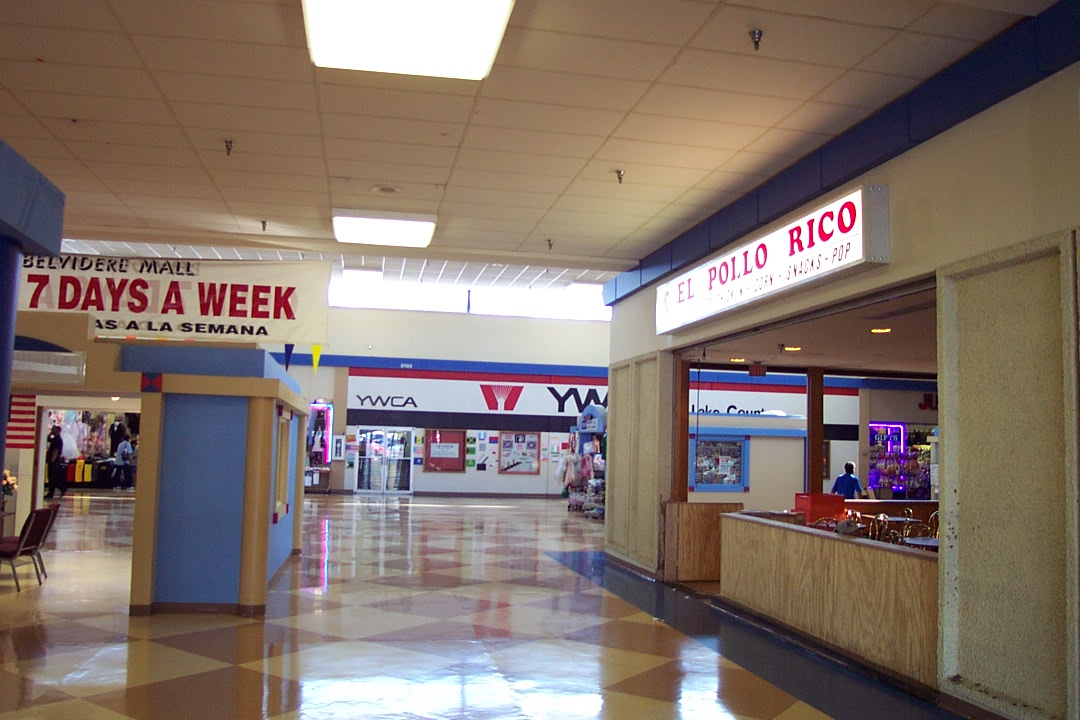 As for Belvidere Mall, it ironically weathered the second competitive blow of Gurnee Mills in 1991 far better than it had Lakehurst Mall in 1971. Throughout the 1990s, following the 1988 departure of Montgomery Ward, Belvidere Mall repositioned itself to be ancillary-on-purpose, which is often a boon for these smaller, much older enclosed centers, especially when encroached upon by more popular competition. A Builders Square home improvement center replaced the vacated Wards soon after Wards fled to Lakehurst, and the same spot quickly became a Home Depot following the demise of the Builders Square chain in 1998. Also in 1998, the mall revamped its image with a new name of Belvidere Discount Mall, and not only attracted discount retailers, but local ethnic/hispanic ones as well. As the city of Waukegan is 50 percent hispanic, and a large hispanic population resides in several other cities in northeast Lake County, the mall serves an underrepresented population and thus has carved out its own niche, unaffected by the woes of traditional retail competition.
As for Belvidere Mall, it ironically weathered the second competitive blow of Gurnee Mills in 1991 far better than it had Lakehurst Mall in 1971. Throughout the 1990s, following the 1988 departure of Montgomery Ward, Belvidere Mall repositioned itself to be ancillary-on-purpose, which is often a boon for these smaller, much older enclosed centers, especially when encroached upon by more popular competition. A Builders Square home improvement center replaced the vacated Wards soon after Wards fled to Lakehurst, and the same spot quickly became a Home Depot following the demise of the Builders Square chain in 1998. Also in 1998, the mall revamped its image with a new name of Belvidere Discount Mall, and not only attracted discount retailers, but local ethnic/hispanic ones as well. As the city of Waukegan is 50 percent hispanic, and a large hispanic population resides in several other cities in northeast Lake County, the mall serves an underrepresented population and thus has carved out its own niche, unaffected by the woes of traditional retail competition.
Ironically, Belvidere Mall was hit not once, but twice, and the second blow allowed it to stay in the game, albeit a far cry from the traditional enclosed mall it opened as over four decades ago. The photo set included here was shot in 2001. Make sure to check out the interesting shops, the antique laundromat, and the cinema. Has the mall changed significantly since? Any other stories or information to tell? What was Belvidere Mall like during its heyday?











Update 11/15/07: John G. has sent once again sent us some great vintage pictures. Enjoy them.




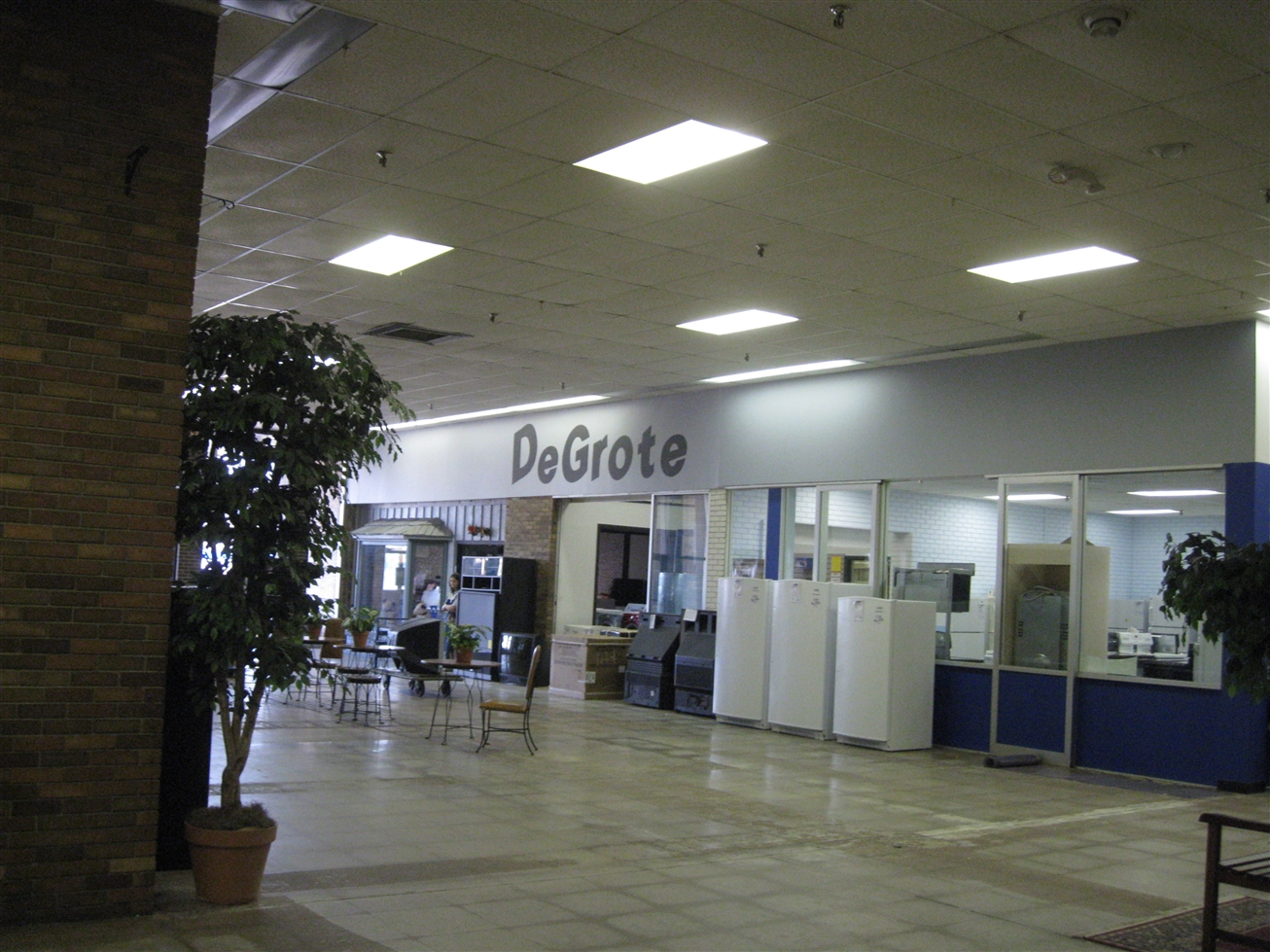 Instead, developers did build Freeport a small, enclosed mall of 186,000 square feet along West Galena Ave (US 20 Business), in 1965 and named it Lincoln Mall, which is appropriate enough as the famous Lincoln-Douglas debates took place downtown. And it has not changed since…well, the structure anyway. Certainly, the anchors and in-line stores have come and gone. Unfortunately, though, they’ve mostly ‘gone’ – away, that is; the last store open inside the mall is locally-owned Degrote TV and it’s right by the main entrance. Earlier in 2008, the mall’s east anchor Menard’s moved to bigger, brand new digs with all the rest of the strip fodder down on S. West Ave. The very large west anchor is currently vacant. It was most recently a Big Lots, but what was it before? Also, a small Dollar General is appended onto the mall structure on the west end, past the former west anchor.
Instead, developers did build Freeport a small, enclosed mall of 186,000 square feet along West Galena Ave (US 20 Business), in 1965 and named it Lincoln Mall, which is appropriate enough as the famous Lincoln-Douglas debates took place downtown. And it has not changed since…well, the structure anyway. Certainly, the anchors and in-line stores have come and gone. Unfortunately, though, they’ve mostly ‘gone’ – away, that is; the last store open inside the mall is locally-owned Degrote TV and it’s right by the main entrance. Earlier in 2008, the mall’s east anchor Menard’s moved to bigger, brand new digs with all the rest of the strip fodder down on S. West Ave. The very large west anchor is currently vacant. It was most recently a Big Lots, but what was it before? Also, a small Dollar General is appended onto the mall structure on the west end, past the former west anchor.